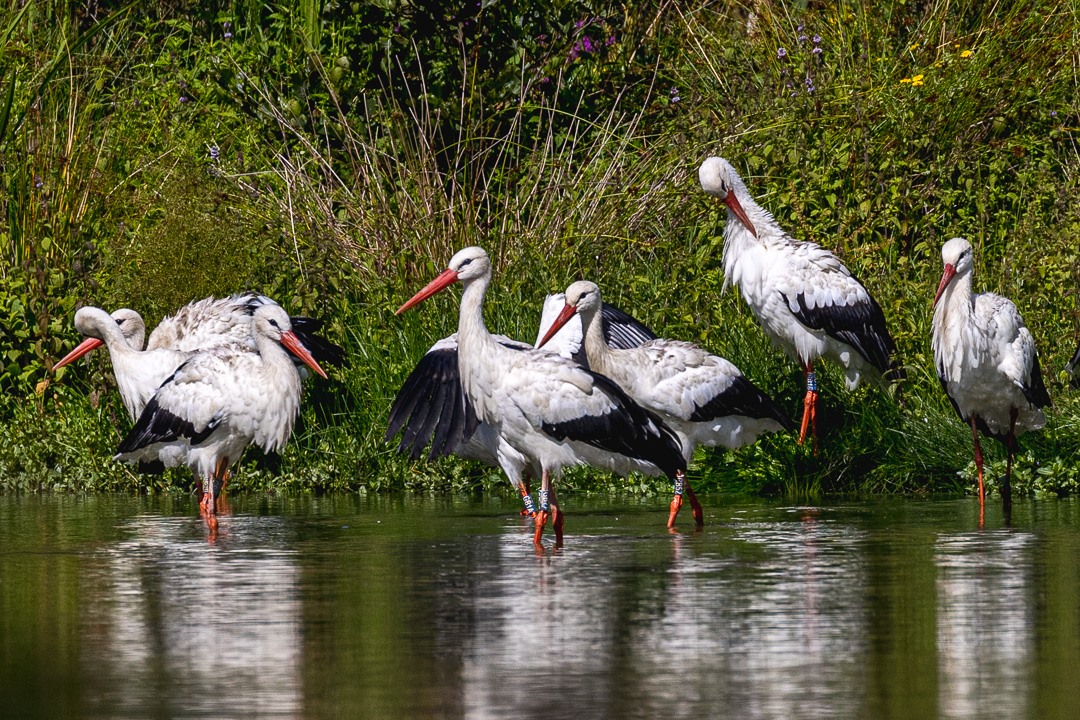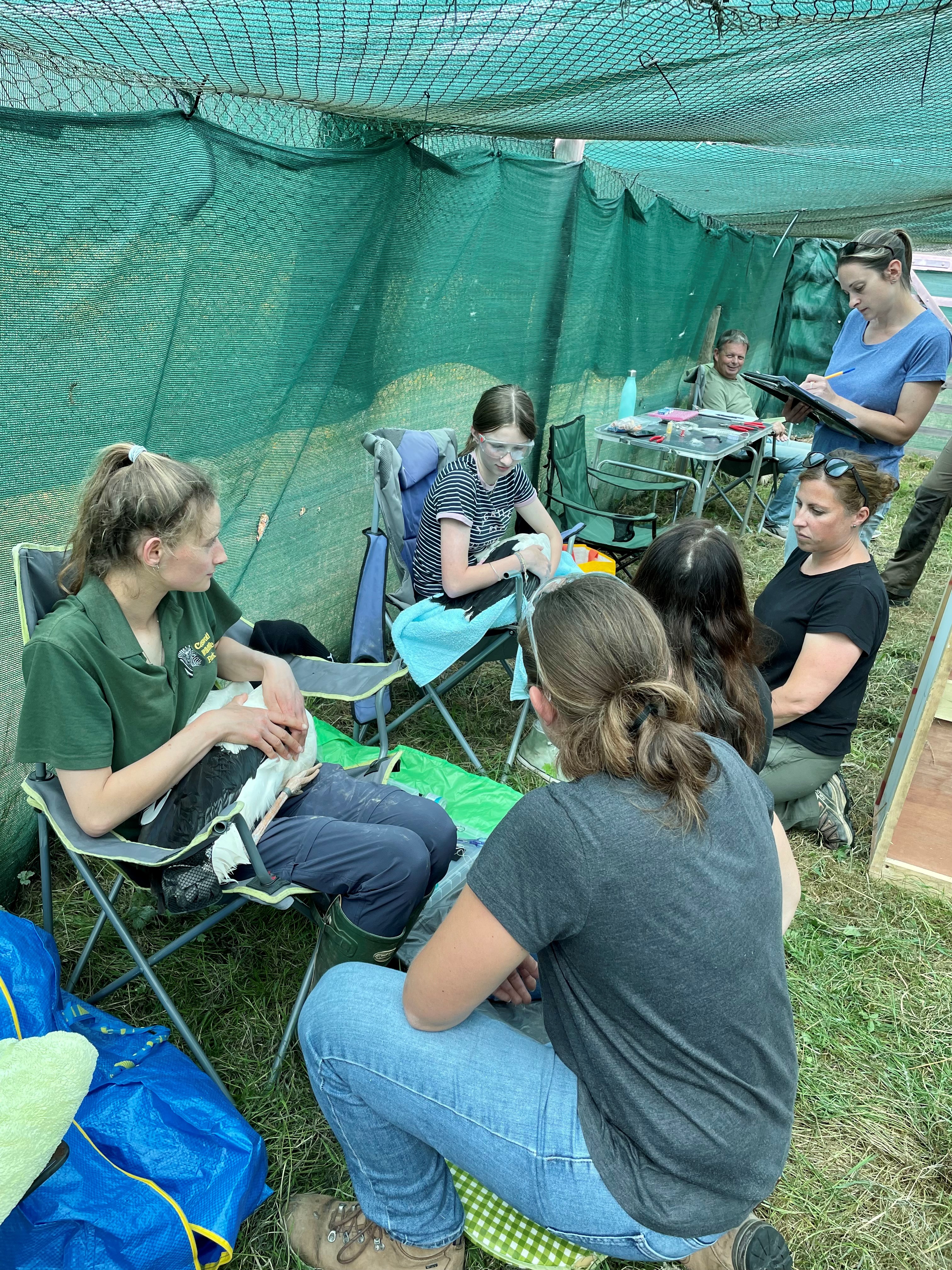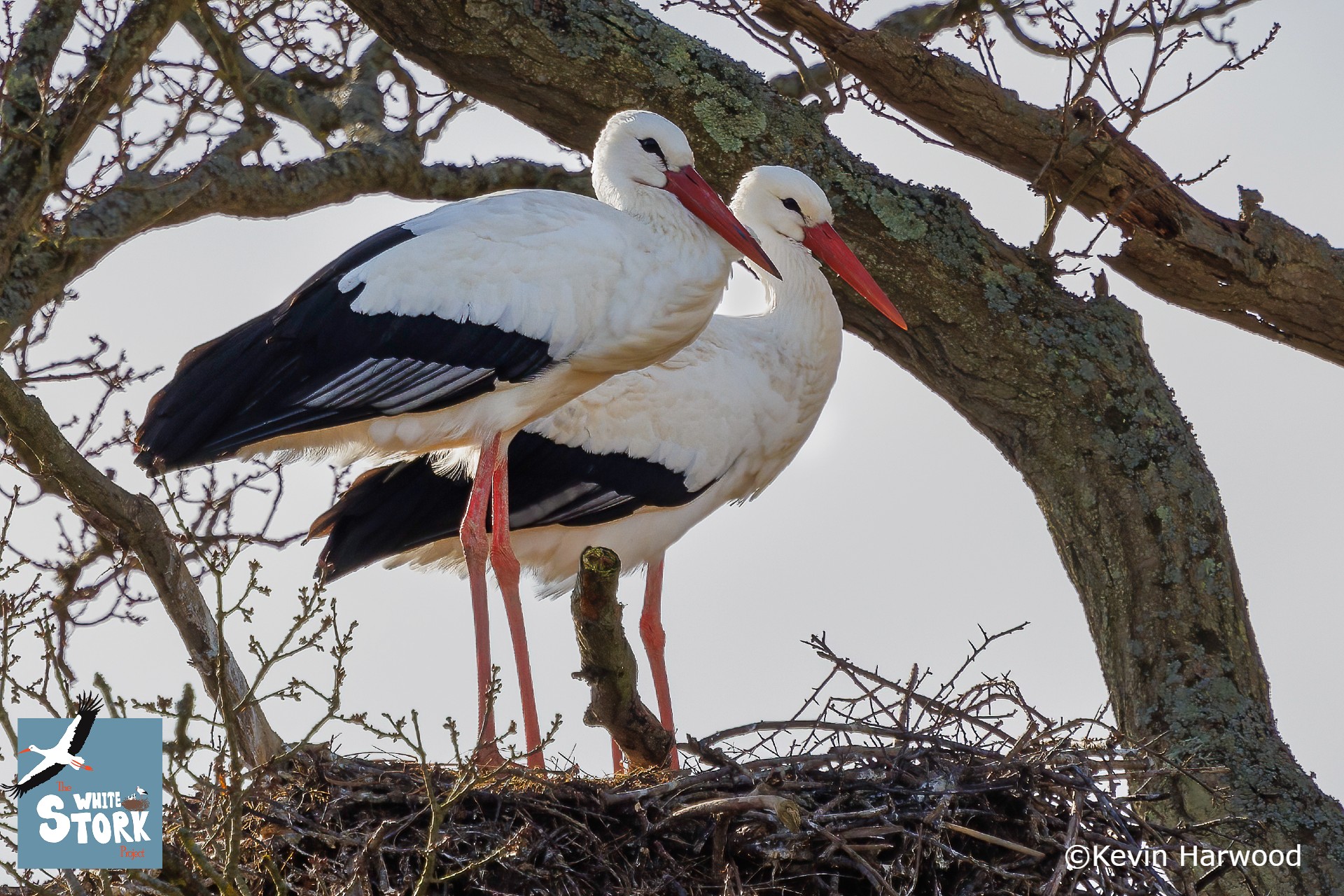We are told more about the innovative project to restore White Storks to England, a rewilding project involving multiple zoos...
The White Stork Project (WSP) is a pioneering partnership of private landowners and nature conservation organisations, working together to restore a population of at least 50 breeding pairs in southern England by 2030.
The project partners include the Knepp Estate, Cotswold Wildlife Park and Gardens, Roy Dennis Wildlife Foundation, Durrell Wildlife Conservation Trust, and two satellite sites at Wintershall Estate in Surrey and Wadhurst Park Estate in East Sussex. In 2022 Wildwood Trust joined the partnership and contributed four juveniles to this year’s release.
The goal of establishing a population in southeast England is being undertaken through a phased released programme which follows the methodology used by a Swedish reintroduction which started in the 1980s and was later developed into a three-phased programme.
Phase one of the project began in 2016 with a cohort of wild birds arriving from Warsaw Zoo, Poland. These birds had been injured in the wild and were rehabilitated at the zoo but were not able to be re-released into the wild due to losing the ability to fly caused by the severity of their injuries. They are kept in large 6 acre, open-topped enclosures at WSP release sites: Knepp, Wadhurst Park and Wintershall Estate. These flightless birds act as a magnet for any wild storks flying over and once sexually mature will also form a static breeding population with their juveniles being able to disperse once fledged.

Storks in their enclosure. Photo credit: Kevin Harwood
From 2018 fully rehabilitated birds from Poland were released at Knepp and Wadhurst Park after spending time in large aviaries for two winters, imprinting the birds on the area. This second phase creates a resident, free-flying, breeding population and in 2020 the project celebrated its first wild hatched chicks at Knepp Estate, the first in the UK for over 600 years.
Cotswold Wildlife Park and Gardens undertake the captive breeding programme for the WSP. Every year since 2019 the park has raised captive-bred juvenile storks to be released in West Sussex by the project. This year the park raised 34 juvenile storks which were moved to Knepp in July, joined by four from Wildwood, before all 37 were released in August.
The rationale behind releasing captive-bred juveniles follows methodology from the Swedish stork reintroduction project, which found that breeding adult birds were less likely to migrate south for the winter, but juvenile birds still had an inherent instinct to leave, thereby re-establishing ancient flyways between northern Europe and Africa. This is the third phase of the release, and the project will be undertaking these juvenile releases for five years, followed by a review to identify if further releases are necessary.
Post-release monitoring to understand more about the storks’ behaviour is a very important part of the project and is being led by Durrell Wildlife Conservation Trust in partnership with the British Trust for Ornithology (BTO) and the University of East Anglia (UEA).
On arrival captive-bred juveniles are fitted with WSP project Darvic and BTO legs rings, they are weighed and measured, and each year a proportion of the juveniles are fitted with GPS tracking devices. All wild hatched juveniles are also fitted with the same identification rings and this year, for the first time, the project also fitted four GPS tags to these wild individuals.
All project birds are colour ringed with a large blue Darvic ring with the code GB followed by a letter/number combination, and a BTO ring. Any sightings can be reported via www.whitestorkproject.org/report-a-sighting, or to [email protected]

Ringing white storks. Photo credit: Matt Phelps
Data from both the GPS tags and sightings reports of ring numbers submitted by members of the public have enabled the project team to track storks from as far north as Aberdeenshire to as far south as Kenitra in Morocco. A record number of eleven juveniles were GPS tagged in 2022, most of which have now left the UK for the winter and are dotted about in France and Spain. Amazingly, three of this year’s juveniles were spotted in Morocco and this sighting made its way to the project team through Facebook. An incredible example of the importance of leg ringing!

Storks on their nest. Photo credit: Kevin Harwood.
By Matt Phelps, Seasonal Field Assistant, WSP & Durrell & Lucy Groves – UK Programme Manager, Durrell
All blogs reflect the views of their author and are not a reflection of BIAZA's positions.
Related Members
-
News
 Belfast Zoo helps to bring Christmas joy to Children’s Hospital 19th December, 2025Belfast Zoo joined the Lord Mayor of Belfast, Councillor Tracy Kelly, on Monday (15th December) to help bring festive cheer to the Royal Belfast Hospital…
Belfast Zoo helps to bring Christmas joy to Children’s Hospital 19th December, 2025Belfast Zoo joined the Lord Mayor of Belfast, Councillor Tracy Kelly, on Monday (15th December) to help bring festive cheer to the Royal Belfast Hospital… -
News
 Colchester Zoological Society welcomes new arrivals 19th December, 2025This December, Colchester Zoological Society (CZS) welcomed some exciting new arrivals! A young male pygmy hippo, Mikolas, from Zoo Dvur Kralove…
Colchester Zoological Society welcomes new arrivals 19th December, 2025This December, Colchester Zoological Society (CZS) welcomed some exciting new arrivals! A young male pygmy hippo, Mikolas, from Zoo Dvur Kralove… -
News
.png?w=100&h=100&zc=1&f=jpeg&hash=8d175f93cde920c5ba23c8ea7f92e55a) Blog: Understanding the human side of zoos 16th December, 2025Why are zoo researchers increasingly looking to social science? Dr Nieky van Veggel explains the significance of understanding the human dimension…
Blog: Understanding the human side of zoos 16th December, 2025Why are zoo researchers increasingly looking to social science? Dr Nieky van Veggel explains the significance of understanding the human dimension…



